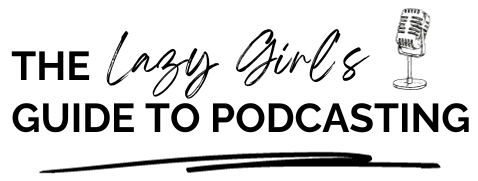
How to Repurpose a Podcast Episode Into a Blog Post That’s Optimised for SEO
As a podcaster, you may be missing out on valuable opportunities to reach a wider audience if you are not repurposing your podcast episodes into SEO-optimised blog posts.
By doing so, you can attract more traffic to your website, increase your online visibility, and create valuable content that your audience can easily access and engage with.
In this post, we will show you how to convert a podcast episode into an SEO-optimised blog post, giving you the tools and strategies you need to reach new heights in your content creation efforts.
Why repurpose a podcast episode into a blog post?
We all know that podcasting is an excellent way to connect with your target audience and establish your authority in your niche. It’s a type of long-form content that really helps you to connect with your audience and stick around for a lot longer than Instagram posts or TikTok videos.
However, even the most successful podcasts have a limited reach.
By repurposing your podcast episode into a blog post, you can reach a wider audience that prefers reading over listening.
Additionally, blog posts are more shareable than podcast episodes, making it easier for your content to go viral and attract more traffic to your website. Plus, your information and content can reach the blogging community, where it’s estimated that 77% of internet users read blogs. So there’s potentially a large audience that you could be tapping into.
Another reason to repurpose your podcast episodes into blog posts is that they can help you improve your SEO.
Podcast episodes are not easily searchable as other types of content. After all, they are not crawled by search engines.
Typically, people do not turn to Apple Podcasts or Spotify to search for an answer to their questions in the same way that they turn to Google, YouTube, and TikTok. Therefore, your amazing podcast content that might provide these searchers with the answers they need might not be getting in front of your target audience.
In contrast, blog posts are easily searchable, and they are crawled by search engines, making it easier for your content to rank higher in search engine results pages (SERPs).
In short, converting your podcast episodes into blog posts can help you attract more traffic, increase your online visibility, and improve your SEO. Plus, if you embed the podcast episode that the blog post is based on, you can pick up new podcast listeners as well.
Benefits of SEO-optimised blog posts
An SEO-optimised blog post is a blog post that is optimised for search engines.
This means that it contains the right keywords, meta descriptions, and other on-page SEO elements that make it easier for search engines to crawl and index your content.
An SEO-optimized blog post can help you improve your search engine rankings, attract more traffic to your website, and establish your authority in your niche.
Here are some benefits of SEO-optimized blog posts:
Higher search engine rankings
An SEO-optimised blog post is more likely to rank higher in search engine results pages (SERPs) than a blog post that is not optimised for search engines. This means that your content will be more visible to your target audience, and you will attract more traffic to your website.
More traffic to your website
An SEO-optimised blog post can help you attract more traffic to your website. By targeting the right keywords and optimizing your content for search engines, you can reach a wider audience and drive more traffic to your website.
Choosing the right podcast episode to repurpose
Not every podcast episode might be suitable for repurposing into a blog post.
For example, I tend to turn every episode of The Lazy Girl’s Guide to Podcasting into a blog post because the content directly speaks to you, the lovely people who visit this section of my website.
However, a lot of the episodes of The Confident CEO Podcast aren’t all as relevant and therefore to post every single one of those to this website could be confusing for SEO and my readers. Therefore, for that podcast, I am quite selective about what I choose to transcribe and turn into a blog post.
To choose the right podcast episode to repurpose, you need to consider the following factors:
Relevance
Choose a podcast episode that is relevant to your target audience and your niche. Your blog post should provide value to your readers, so it is important to choose a podcast episode that aligns with their interests and needs.
Length
Choose a podcast episode that is not too long or too short. A podcast episode that is too long may be difficult to transcribe and edit, while a podcast episode that is too short may not provide enough content for a blog post.
Quality
Choose a podcast episode that is of high quality. A podcast episode that is poorly recorded or poorly delivered may not translate well into a blog post.
Transcribing your podcast episode
Transcribing your podcast episode is the first step in converting it into a blog post.
Transcribing involves converting the audio content into written content, which can be edited and optimised for SEO. Here’s how I turn my podcast episodes into blog posts.
Use a transcription service
There are many transcription services available online that can help you transcribe your podcast episode quickly and accurately. These services use software that can transcribe your audio content into written content, which you can then edit and optimize for SEO.
Our favourite transcription service is Descript, for the simple reason that it gives you a transcript of your episode and the ability to create audiograms and sound bites for sharing on social media.
Click to get started with Descript for free >>
I choose my podcast episode audio and then upload it to Descript, which then transcribes the episode in a matter of minutes.
Edit the transcript
I highly suggest that you DO NOT just post the raw transcription to your blog.
There are a lot of ‘um’s,’ ‘ah’s and other nuances that just will not translate very well into writing and will need to be edited.
You also need to edit the transcript to ensure that it is accurate and readable. This involves correcting any errors in the transcription and ensuring the transcript flows well and is easy to read.
Tips for editing your transcript for readability
After transcribing your podcast episode, you need to edit the transcript to ensure that it is readable and engaging.
Here are some tips for editing your transcript:
Use short paragraphs
Break up your content into short paragraphs to make it easier to read.
This will also make your content more scannable, which is important for online readers who tend to scan content rather than read it in full. Break up your paragraphs as well. Walls of text can be off-putting to readers.
Use subheadings
Use subheadings to break up your content into sections.
This will make your content more organised and easier to navigate and read.
Use bullet points and numbered lists
Use bullet points and numbered lists to highlight key points in your content.
This will make your content more visually appealing and easier to read.
Adding on-page SEO elements
Adding on-page SEO elements to your blog post can help you improve your search engine rankings and attract more traffic to your website.
Title tag
Your title tag is the most important on-page SEO element. It could include your target keyword (or a variation of) and be compelling enough to attract clicks from search engine users.
Meta description
Your meta description should be a brief summary of your blog post that includes your target keyword (or a variation of).
It should be compelling enough to entice search engine users to click through to your website.
Header tags
Use header tags (H1, H2, H3, etc.) to structure your content and make it easier to read.
Your H1 tag should include your target keyword, and your H2 tags should include related keywords. But remember, don’t keyword stuff!! Your work needs to be legible to your reader and not just be comprised of keywords stuck together!
Alt tags
Use alt tags to describe the images included within your post.
This will make your content more accessible to visually impaired users and improve your search engine rankings.
Formatting your blog post
Formatting your blog post can make it more visually appealing and easier to read. Here are 4 top tips for formatting your blog post:
- Use white space to break up your content and make it more visually appealing. This will also make your content more scannable and easier to read.
- Use images to break up your content and make it more visually appealing. Be sure to use alt tags to describe your images and improve your search engine rankings.
- Use a consistent font throughout your blog post to make it easier to read. Be sure to use a font that is easy to read on both desktop and mobile devices.
- Include an embed of your podcast episode. That way, your reader can listen to your podcast and potentially listen to other episodes/subscribe to your podcast as well.
Promoting the blog post
Promoting your blog post is essential to attracting traffic to your website. Here are some tips for promoting your blog post:
Share it on social media
Share your blog post on social media to reach a wider audience. Be sure to use relevant hashtags to make it easier for users to find your content.
Email your subscribers
Email your subscribers to let them know about your new blog post. Be sure to include a link to your blog post and a brief summary of what it is about.
You can also include an embed of the related podcast episode for your subscribers to listen to.
Tell your guest
If a guest had featured in your podcast episode, mention them in your blog post, put a link to their website, and let them know that you’ve done this.
Whilst it isn’t your guest’s job to promote your podcast or blog (it’s your podcast/blog after all!), most guests will share a link if you provide them with one.
Conclusion
Converting your podcast episode into an SEO-optimised blog post can help you attract more traffic, increase your online visibility, and improve your SEO.
By following the steps outlined in this post, you can create valuable content that your audience can easily access and engage with.
So, whether you are a seasoned podcaster or just starting out, it is time to start converting your podcast episodes into blog posts and taking your content creation efforts to new heights.
Do you currently convert your podcast episodes into blog posts? Or are you thinking of doing this after reading this post? Let us know in the comments!





